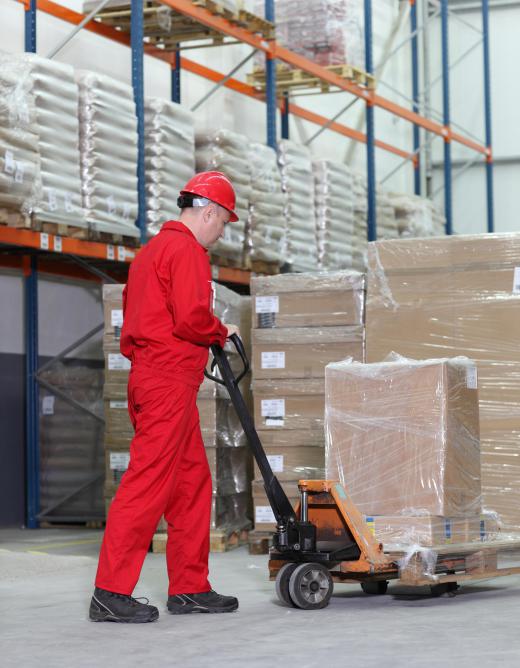Pallet design is an important part of the shipping industry, because these wooden, metal, plastic and sometimes paper foundations help keep goods stacked in one tight package. The traditional thin, flat wooden box made of slats, called a stringer, is still used to stack products, but that design is only one of many options. Other pallet designs include block pallets and perimeter base pallets.
The material of the pallet is important whether it's being created especially for a project, like with a computerized pallet design system, or is a recycled used pallet. In pallet design, soft woods create cheaper but more breakable pallets than hardwoods. Both are more environmentally friendly than other materials because wooden pallets can be easily repaired instead of simply thrown away. Even less durable than wood, a paper shipping pallet is a cheap, lightweight alternative that is perfect for loads like plastics.

When bigger loads need to be sent out, shippers turn to a metal and plastic pallet design. These materials are far more durable than wood or paper, each providing unique qualities. Plastic pallets are lighter than metal, very durable, and often have short legs for added stability, but once these pallets break they are unrepairable. Metal pallets, usually constructed from aluminum or steel, are the most durable pallets for shipping and are also fire and rust proof. These are very heavy, though, and are not efficient when shipping is charged by weight.
Most all materials, aside from paper, can be crafted into one of the three major shipping pallet design types. The stringer pallet is the most common, consisting of three large slats on the top and bottom, sandwiching a thin inner frame. The inner frame creates open space between the slats so a fork lift jack can fit inside and easily lift the pallet's contents. A block pallet is similar to a stringer, except that it utilizes more slats, typically five on each side, creating a stronger pallet.
The perimeter base pallet design is considered the strongest of all. Its odd setup is ideal for automated industries and shipping equipment, as it only has slats on one side and an open bottom, for easier mechanical manipulation. The perimeter base has up to seven slats across its top, leaving almost no gaps or empty spaces along the surface.
